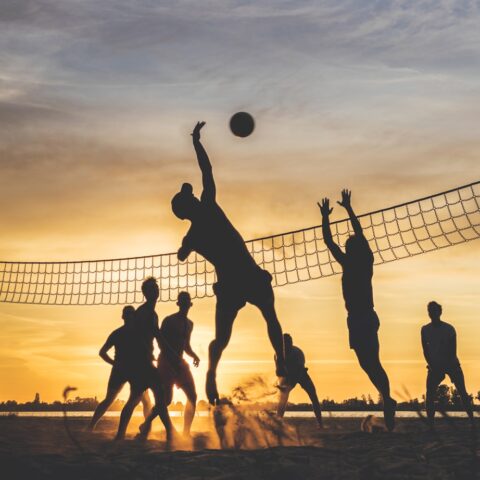From Rejection To Registration: How To Avoid Trademark Rejection In The UAE?

One of the most valuable corporate assets for businesses today is their Trademarks, which protect a brand’s identity in the highly dynamic and competitive business world. Usually, constituted by distinguished forms of names, figures, graphics, titles, logos, hallmarks, seals, patterns, and so on, trademarks can also include drawings or three-dimensional features such as the shape and packaging of products, or even intangible signs like sounds or fragrances. A business’s trademark becomes the identity and face of a brand, serving as a sign that sets the company’s goods or services apart from others.
A crucial step in a company’s trademark lifecycle is its Registration, which allows the business to legally establish its trademark rights, thereby strengthening such marks’ enforcement and protection in the business environment.
However, effectively and carefully undertaking the registration process can be cumbersome but necessary. Trivial and the slightest similarities in your trademarks can end up in the Rejection of your trademark application or even in lengthy and complex legal disputes.
Table of Contents
Key Reasons Why Trademark Applications Get Rejected in the UAE.
In the UAE, trademarks are regulated by the Federal Decree-Law No. (36) of 2021 on Trademarks. Article 3 of the said legislation envisages what shall not be considered or registered as a Trademark in the UAE.
1. Similarity to any existing trademarks:
One of the most common mistakes that leads to rejection of a trademark application is the similarity of the submitted mark to another trademark previously filed or registered by a third party for the same or related goods or services.
The 2021 UAE Trademarks Law under its Article 3(11) expressly prohibits similar or identical marks. Such similarities may create the impression that they are products or companies linked to each other, causing confusion within the consumer group or even harming the original trademark owner’s interests.
To be considered identical or similar to another, a mark need not be a replica or an exact copy of a prevailing mark. The mere existence of unnoticeable similarities with all or any of its components, thereby impairing the feature of distinctiveness, can lead to the marks being regarded as the same. Hence, such marks are deceptively identical. The similarity may pertain to the similarity of the goods or services, sound/pronunciation, meaning, and commercial impression.
2. Non-distinctive or commonly used marks:
The major function of a trademark is to distinguish the goods or services of one entity from others. Hence, a key essential feature that any trademark shall possess is ‘distinctiveness’, whereby it shall not be a commonly used mark. A trademark must be distinctive, either inherently or through acquired secondary meaning through its long-term use. Therefore, the selected mark should be unique and distinct.
3. Use of descriptive or generic marks:
Generally, the determination of whether a mark qualifies for registration or protection is based in part on the category to which the mark belongs.
If a selected mark carries generic or purely descriptive terms, the probability of its rejection weighs more. Generic terms are common names generally used for a particular product or service. Now, descriptive marks are when they just clearly describe a feature or characteristic of the product or service.
For example, a perfume brand shall not include terms such as perfume or fragrance as its trademark. These do not entail a distinctive character, and their use may result in a monopoly over a generic name, thereby limiting other sellers from describing their products.
4. Use of restricted words or symbols:
Under the 2021 Trademarks Law, trademarks having certain types of words or symbols are not allowed and may lead to your application being rejected –
- Marks breaching the public morals or violating the public order: In the UAE, expressions, drawings, or marks that violate public order or public morals shall be restricted as outlined in Article 3(2) of the 2021 Trademarks Law.
- Marks containing public symbols or emblems: Moreover, under Article 3(3), trademarks containing or imitating elements such as public emblems, flags, military emblems, national and foreign decorations, coins, etc., and other symbols of the State, or other countries, or of any international organisations shall also be restricted from being used.
Symbols of the Red Crescent or Red Cross, and such other similar logos, are also restricted (Article 3(4)). - Marks having a religious nature: As provided under Article 3(5), any marks identical or similar to Symbols having a religious nature or that offend such religious values shall not be considered for registration.
5. When the trademarks poorly define the goods/ services:
A vague description or incorrect identification of the goods and services can be one of the most avoidable reasons a UAE trademark application gets rejected. In most countries across the globe, including the UAE, the trademark registration system relies on the internationally used Nice Classification.
Nice Classification (NCL) is a regularly updated, international classification of goods and services applied for the registration of marks. Established by the Nice Agreement in 1957, the classification contains 45 classes wherein goods are classified 1 to 34, while services fall into Classes 35 to 45.
The applicants may choose the correct “NICE Class Number” and then select or specify product/service details within that class from the system’s predefined lists.
6. Filing of application with incorrect details:
Failure to submit proper documents, leading to incomplete documentation, and errors such as misspellings or incorrect applicant details can result in the rejection of a trademark application. The application shall accurately identify the trademark owner’s legal name and entity type, and such other information.
Moreover, failure to respond to trademark office action or notifications from the UAE Trademark Office to the applicant and missing important deadlines also jeopardise the application.
Avoid Trademark Rejection in the UAE By Following These Key Steps.
1. Conduct a comprehensive trademark search
A pre-adoption trademark search before choosing and registering your trademark can aid in locating conflicting brands and avoid potential legal complications, thereby ensuring a smooth registration process and safeguarding your brand’s future.
A proactive step undertaken by businesses, a trademark search is a formal review of the local and international trademark databases to determine whether trademarks similar to your proposed mark exist in the market. Hence, it helps in locating identical or similar marks and designing a suitable trademark.
2. Choose a distinctive and unique trademark:
Once a thorough trademark search is completed, your business can effectively design a suitable trademark that is unique, original, and stands out from your competitors.
Trademarks serve as marks of identification, wherein they become symbols with which customers form an emotional connection with the product. Therefore, designing a trademark that is genuinely unique, distinctly different from others, and visually attractive to catch customer’s attention can give you an added advantage and facilitate easier registration of your mark.
3. Ensure Legal Compliance with the UAE’s Intellectual Property Rights Laws:
In the UAE, the Ministry of Economy is the designated authority to register trademarks, where applications can be submitted by Registered Trademarks Agents like us.
UAE entails clear standard laws governing trademarks and is also a signatory to various international treaties that protect intellectual property. Ensuring that your business complies with the UAE trademark law (Federal Decree-Law No. (36) of 2021 on Trademarks) and follows all registration procedures and standards mitigates the chances of legal challenges.
In particular, applicants should avoid marks that are expressly prohibited from registration under Article 3 of the UAE Trademarks Law.
Furthermore, the applicant must ensure that the filing and documentation are accurate, complete, and error-free.
4. Seek Professional Assistance:
Seeking the assistance of experienced IP lawyers or trademark agents in the UAE can significantly lower the risk of rejection of your trademark application. By conducting thorough trademark and clearance searches, ensuring proper classification and documentation, and guiding you through examination, and publication stages, they help streamline the process and enhance your chances of successful registration.
Trademark registration in the UAE secures exclusive use of such rights, provides stronger legal enforcement and remedies, enhances the asset value of the business, and also reflects professionalism while deterring infringers and counterfeiters. Therefore, accurate registration without errors is crucial to avoid rejection and maximise trademark protection. Engaging experienced legal experts can further ensureyou a seamless registration process, thereby safeguarding your brand’s identity and long-term commercial success.
By entering the email address you agree to our Privacy Policy.



